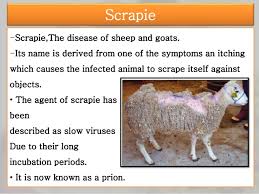The European Union summary report on surveillance for the presence of transmissible spongiform encephalopathies (TSE) in 2019, 17 November 2020, EFSA:
 This report presents the results of surveillance on transmissible spongiform encephalopathies (TSE) in cattle, sheep, goats, cervids and other species, and genotyping in sheep, carried out in 2019 by 28 Member States (MS), and by Iceland, Montenegro, North Macedonia, Norway, Serbia and Switzerland (non‐MS).
This report presents the results of surveillance on transmissible spongiform encephalopathies (TSE) in cattle, sheep, goats, cervids and other species, and genotyping in sheep, carried out in 2019 by 28 Member States (MS), and by Iceland, Montenegro, North Macedonia, Norway, Serbia and Switzerland (non‐MS).
In total, 1,150,388 cattle were tested by MS, a 2.7% decrease from 2018 and 44,557 by the six non‐MS. Six cases of H‐BSE were reported by France (4) and Spain (2), and 1 L‐BSE by Poland. The number of H‐ BSE cases was the largest reported per year including the youngest ever case (5.5 years of age).
In total, 338,098 sheep and 143,529 goats were tested in the EU, an increase of 3.9% in both species compared with 2018. In sheep, 17 inconclusive cases by two MS and 997 cases of scrapie were reported: 911 classical (97 index cases (IC), one of ARR/ARR genotype and 98.7% with genotypes of susceptible groups) by seven MS, 86 atypical (AS) (80 IC) by 11 MS. Thirty‐one ovine scrapie cases were reported by Iceland and Norway. Random genotyping was only reported by eight MS: Cyprus excluded, 15.7% of genotyped sheep carried genotypes of susceptible groups. In goats, three inconclusive cases by two MS and 390 cases of scrapie were reported: 379 classical (24 IC) by six MS, 11 atypical (10 IC) by six MS.
The heterogeneous enforcement of a 3‐year surveillance programme for chronic wasting disease (CWD) in six MS (Estonia, Finland, Latvia, Lithuania, Poland and Sweden) resulted in the testing of 7,980 cervids and confirmation of three CWD cases in wild moose in Sweden. Other seven MS tested 2,732 cervids with no positive results. Norway tested 30,147 cervids in 2019, with two new moose cases. In total, 122 animals from four other species reported by three MS TSE tested negative.




